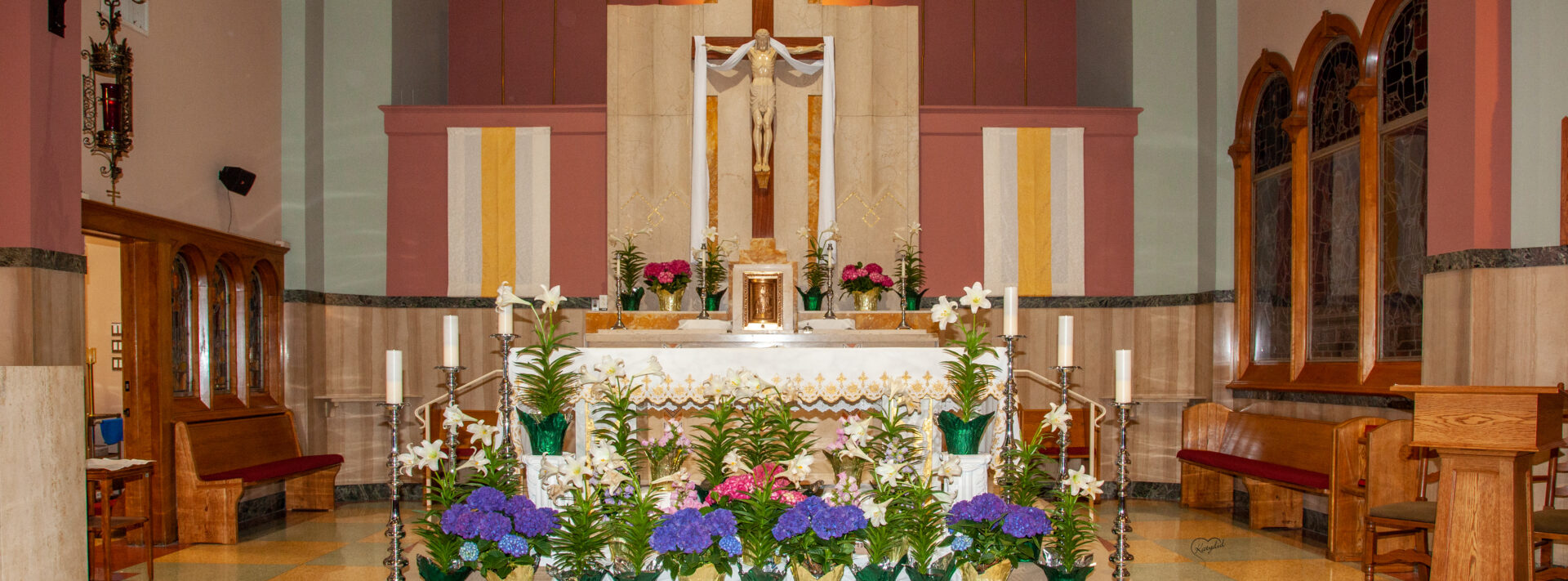Divine Mercy: The Easter Gift
On this Feast of Divine Mercy, we celebrate Jesus’ tender mercy and love which is lavishly poured upon those who surrender their lives to Him in profound trust and accept His Easter Gift. What is this very special Easter Gift and how can we receive it? The Easter Gift is the forgiveness of our sins and the total remission of all temporal punishment for them. Everyone who trusts in God’s merciful love can attain this Divine Gift by cleansing their souls through the Sacrament of Penance in close proximity to this Feast and fervently receiving the Most Holy Eucharist on Divine Mercy Sunday. Saint John Paul II, after many years of prayer and reflection on the revelations of Our Lord to Saint Faustina, canonized her and declared the message of Divine Mercy God’s will for us. It was in the Jubilee Year of 2000 that the yearly universal celebration was established as a Feast on the Second Sunday of Easter. The Gospel which is proclaimed on Divine Mercy Sunday and the Image of Divine Mercy, help us to grasp the full sense and value of this gift.
The Evangelist John makes us share in the emotion felt by the Apostles in their meeting with Christ after His Resurrection. Our attention focuses on the gesture of Jesus, who transmits to the fearful, astounded disciples the mission of being ministers of Divine Mercy. He shows them His hands and His side, which bear the marks of the Passion, and tells them, “As the Father has sent Me, even so I send you” (Jn 20:21). Immediately afterwards, “He breathed on them and said, Receive the Holy Spirit. If you forgive the sins of any they are forgiven; if you retain the sins of any, they are retained” (Jn 20:22-23). Jesus entrusted to the Apostles the gift of “forgiving sins,” a gift that flows from the wounds in His hands, His feet, and especially from His pierced side. From there a wave of Divine Mercy is poured out over all humanity.
On this Feast of Divine Mercy, the most beautiful message comes from Thomas, the disciple who arrived late; he was the only one missing. But the Lord waited for Thomas. Mercy does not abandon those who stay behind. Now, while we are looking forward to a recovery from the pandemic, there is a danger that we will forget those who are suffering and left behind. We must remember that we are all frail, all precious and all equal in God’s sight. God desires that we partake of His free Gift of Mercy and share His mercy and compassionate love with everyone.
Trust in Jesus is the essence of the message of mercy that Saint Faustina received. The image of Divine Mercy with the inscription “Jesus, I trust in You!” was revealed and explained to her by Jesus Himself. She saw coming from His Heart, that was overflowing with generous love, two rays of light which illuminated the world. Jesus told Faustina that the two rays of light denote blood and water. The blood recalls the sacrifice of Calvary and the mystery of the Holy Eucharist; the water, according to the rich symbolism of John, makes us think of Baptism and the Gift of the Holy Spirit (Jn 3:5; 4:14).
May our hearts overflow with gratitude to our Risen Lord for His Easter Gift of Divine Mercy and resolve to share this tremendous gift of Jesus’ compassionate love as a beacon of light and hope for all our brothers and sisters throughout the world. Let us ask Mary, our “Mother of Mercy”, in union with Saint Faustina and Saint John Paul II, to obtain for us an awareness of the depth of Divine Mercy. Fixing our gaze along with theirs on the face of the Risen Christ, let us make our own their prayer of trusting abandonment and pray with firm hope: “Jesus, I trust in You!”
God love and bless you!
Sr. Kathleen Fitzpatrick, IHM
Further information on Divine Mercy is available at: https://www.marian.org/divinemercy.

